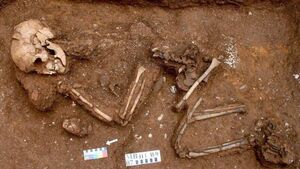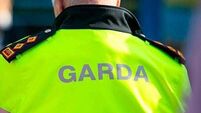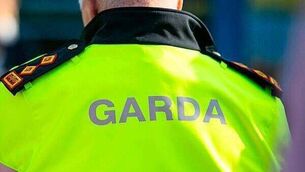Naas skeletons may be those of 1798 rebels

One of the skeletons found during a recent excavation in Naas
BETWEEN 150 and 200 skeletal remains were uncovered last month at a recent excavation of a proposed house site at Dublin Road, Naas, according to the town’s mayor cllr Seamie Moore.
“I was made aware of it on 8 October, but they’ve been adding to it every day,” said cllr Moore.
“A private developer applied for planning permission, and because of where it was, they had to do an archaeological assessment. I understand that these skeletal remains have been moved to Cork for further autopsy examinations, but I’m hoping to get them repatriated after that,” he said.
“As a local historian with a strong focus on the history of Ireland and Naas, I am aware that in excess of 1,000 men, under the banner and leadership of the United Irishmen, fought a major 1798 Battle of Naas to capture the town from its English stewardship and to release local leaders from the town gaol, later to become the town hall and today’s Naas Library,” he clarified.
However, due to the availability of heavy artillery pieces, a well-secured fortress area around the Naas gaol and the ready availability of heavily-armed militia and yeomanry, the rebels were routed and lost the Battle of Naas. In the subsequent round-up of captured rebels and suspects, hundreds of local men were detained in the local gaol and at rural fortified farm bases.
Accounts of that battle are recorded, and local history would claim that many rebels were publicly executed and many others were never heard of again.
Gallows Glen on the Dublin Road has always been identified as an execution and public hanging area.
It is believed that almost all of the skeletons found were those of men and some youths. “No grave markings, timber boxes, metal or religious artifacts were found, indicating a lack of tribute or identification, but one of barbaric indifference,” said cllr Moore.
There is no known register of the area being a ‘community’ graveyard at any time, and many of the found skeletons were strewn across each other.
The numerous site findings would indicate that the burials were spread over a time period.
Many skeletons were found way below the normal depth of burials, indicating that the workings of the gravel pits in the area piled unrequired clay and stones over the burial area as it was worked or intentionally to avoid exact locations. Revelations from the autopsies should reveal if quicklime was used.
The findings would give a strong indication that Gallows Glen was both a hanging and a burial site and most likely the last resting place for the bodies of the ‘disappeared’ rebels of 1798.
However, it can’t be ruled out that the skeletal remains could be those of victims from the Black Death of the 14th century.
It is highly unlikely that local families or communities would have combined in agreement for health, safety or convenience reasons to create a ‘commonplace’ burial site.
“As mayor of Naas MD, including Naas town, I am requesting the repatriation of the skeletal remains of the ‘disappeared’ 1798 rebels, to be reinterred in a mass grave of tribute in the nearby St Corban’s Cemetery in Naas,” said cllr Moore.
“I think the history of the town and the ultimate sacrifice of the Naas dead of 1798 requires that this is the minimum we should do.
“There are many 1798 sites of tribute throughout both the Republic and the six counties.
“I hope you will agree to my proposal and that you will make contact with the necessary officials involved with the excavations to ensure the return, in due course, of the skeletons to a final resting place in Naas,” said cllr Moore in an appeal to the county manager Sonya Kavanagh.
“It would also be of local historical interest if the details of both the burial findings and autopsies were made available to Kildare County Council History Archives,” he concluded.





